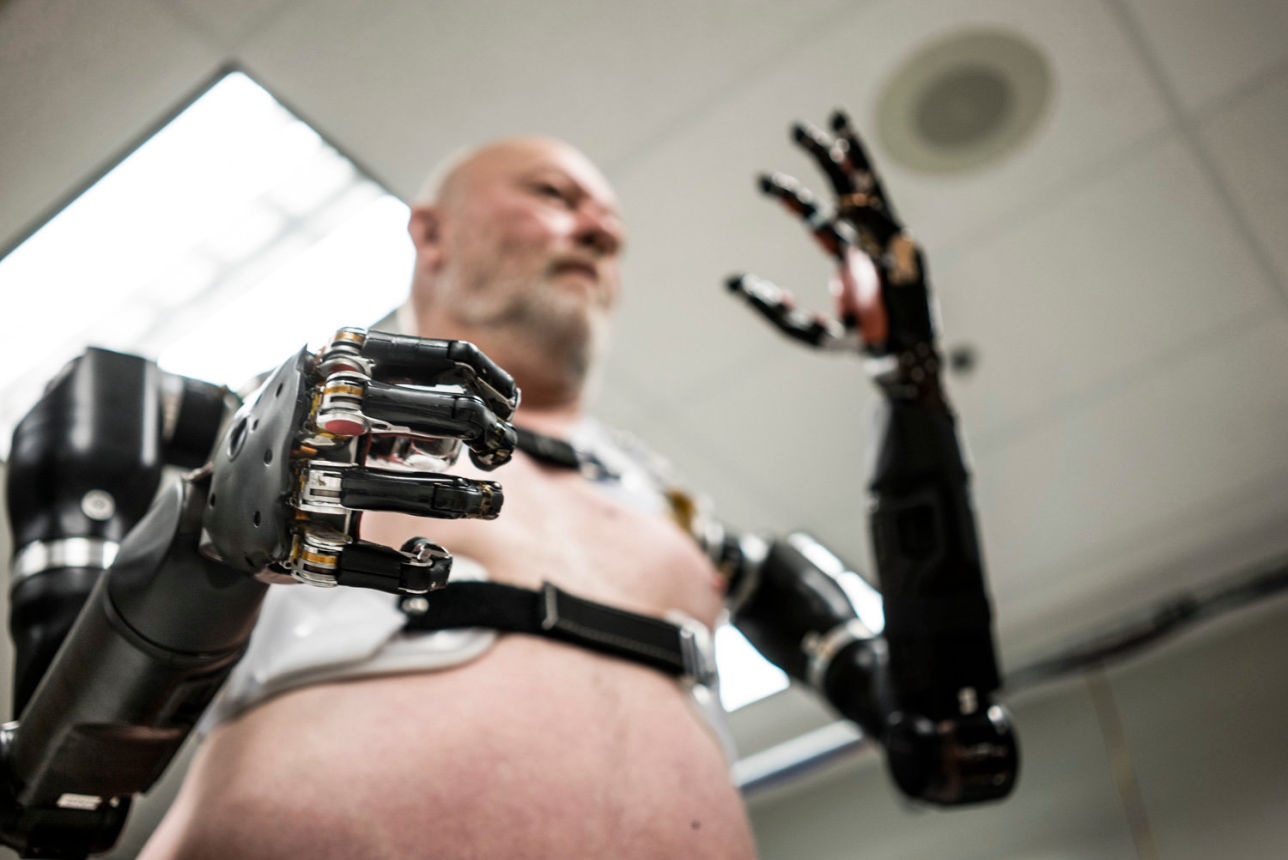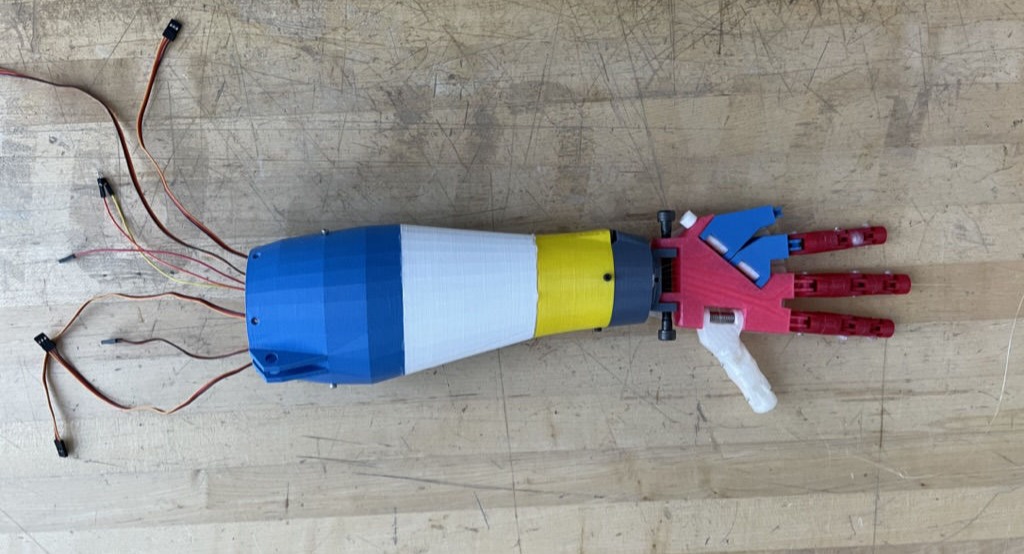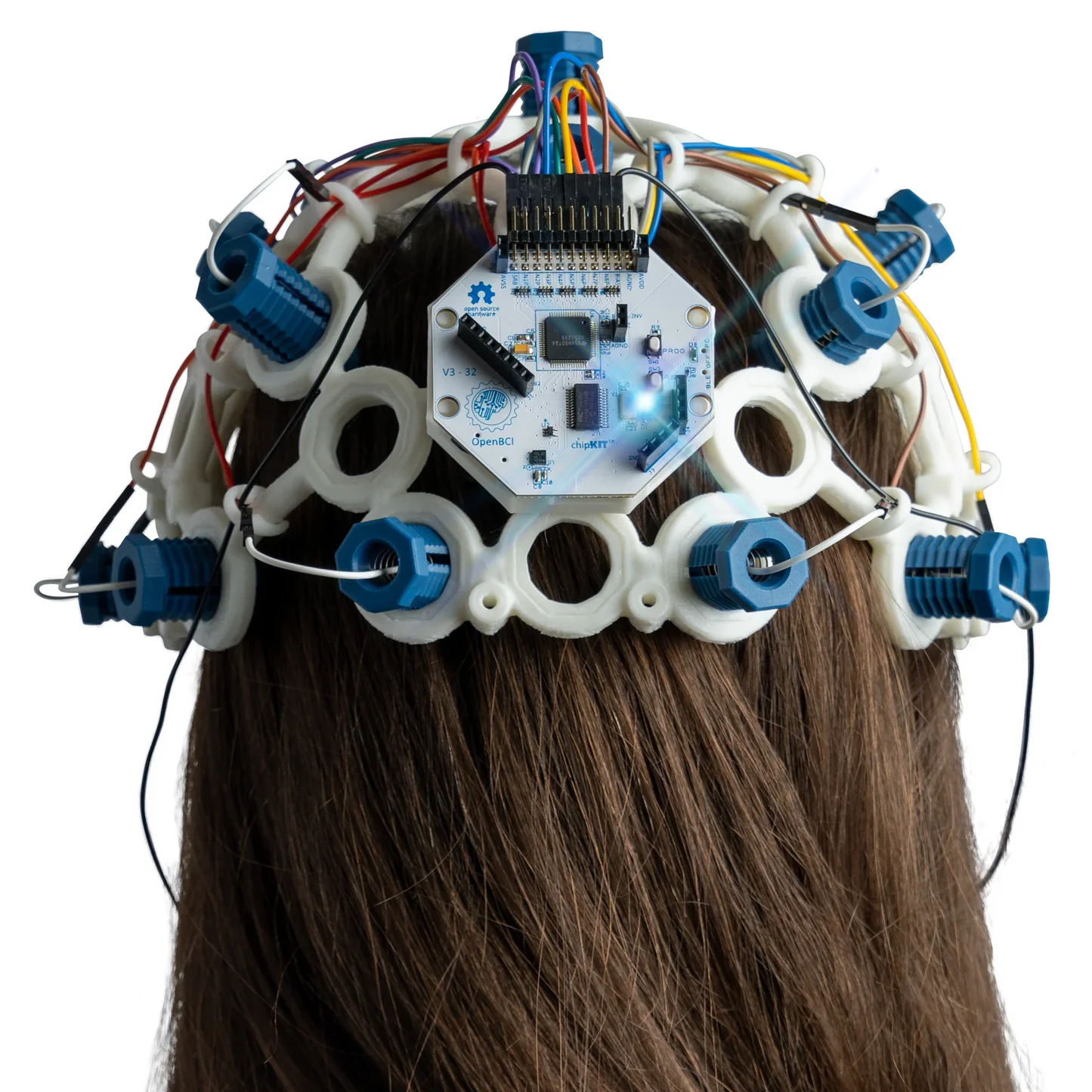The Challenge
Current prosthetics face several limitations:
- Rigid designs or myoelectric control systems
- Reliance on nerve and muscle tissue data
- High costs limiting accessibility
- Complex fitting processes
- Limited availability in many regions
A year-long project focused on developing mind-controlled robotic prosthetics, leveraging EEG data for motor control functions as an alternative to myoelectric systems.
for Prosthetics and Orthotics in the USA in 2022
CAGR for the Prosthetics market
Projected Market Size by 2032
Current prosthetics face several limitations:

Development of a new generation of prosthetics that:

3D Printed Hand with Wire-Based Actuation System
The prosthetic arm was built using 3D printed components based on the InMoov open-source project. The design employs an innovative wire system that enables finger movements with minimal motors:
The system uses an 8-channel OpenBCI Cyton board with dry electrode leads, positioned at FP1, FP2, C3, C4, P7, P8, O1, and O2. The board communicates wirelessly with the computer, ensuring maximum usability and minimal interference.
A RNN model processes the brainwaves to identify three distinct states: Open, Closed, or None. This third state helps reduce noise and improves accuracy. Commands are then sent to servo motors via Arduino for precise control.

OpenBCI Headset for EEG Data Collection